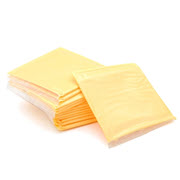|
Jerk McJerkface posted:So circling back, I picked up a 5gal bucket of Killz2, and I guess it'll be terrible? Killz2 is my favorite primer. I used to just grab a bucket of whatever at Home Depot, until I tried that stuff. It'll be great for your purposes. For the actual paint, sure, go nuts and buy the best you can afford.
|
|
|
|

|
| # ? May 28, 2024 22:29 |
|
mobby_6kl posted:I bought an old Tizio lamp off ebay a few weeks ago and either the seller hosed me, or it happened later during my unpacking and handling, but in any case I didn't notice that the base transformer housing was cracked until it was too late to complain. It's not visible from the outside, but it's behind the top rivet: Pop rivets like you'd get in a regular rivet gun won't match. I'd recommend quick-set epoxy applied to the whole broken area in as thick a layer as you can get and still slide the transformer in.
|
|
|
|
Anyone got any tricks for extremely stubborn caulk? Over the past few days we've tried: - scraping - cutting - goo off - mineral spirits - multi-tool w/scraper - wire brush It's a gap between aluminum trim and concrete, probably 20 years old. I believe a silicone caulk. The uneven-ness in the concrete seems particularly problematic. Most of its gone but there's residue remaining and I'm a bit worried the re-caulk won't take. The only things I've seen that I've not tried are hair dryer/heat-gun and angle grinder. I don't have either so I thought I'd ask here before buying. The grinder worries me since its over two materials, and I don't think I'd use a heat gun ever for anything. Jenkl fucked around with this message at 13:36 on Nov 12, 2020 |
|
|
|
Oscillating mulit tool?
|
|
|
|
wesleywillis posted:Oscillating mulit tool? That's in the list (after my sneaky typo edit...)
|
|
|
|
I'd try a dremel or drill with a wire brush. An angle grinder seems a bit excessive for caulk.
|
|
|
|
Jenkl posted:That's in the list (after my sneaky typo edit...) You can literally cut through metal or stone with a proper oscillating multitool and the correct blade. Something's not right if you're saying you've tried one and it didn't work. This is either a tool, bit or technique problem.
|
|
|
|
Motronic posted:You can literally cut through metal or stone with a proper oscillating multitool and the correct blade. Something's not right if you're saying you've tried one and it didn't work. This is either a tool, bit or technique problem. Ive used the osc. multi-tool w/ scraper. Its what I used to get the majority of it off. The uneven concrete makes some spots impossible to get to with the scraper - can't get it flush. It's also pretty rough on the aluminum trim - but I'm not nearly as concerned as that since it'll be covered by new caulk so scrapes aren't an issue. Are you suggesting I cut out the problem parts with a concrete blade? I'd not considered that yet, looking to try the drill wire brush first. Any obvious technique problems I might be having? In my mind I'm using as intended but I'm not exactly red green. Jenkl fucked around with this message at 17:44 on Nov 12, 2020 |
|
|
|
Motronic posted:Nope you don't have that backwards, that's the stuff in the well at my old house. It's such a pain in the rear end. Man, I'm like 99% certain that bacteria is in my entire town's water supply. I've lived in several apartments and a couple houses here over the years, and most of them end up with weird pink discoloration where water might pool slightly, the corner where the tub meets the tub/shower wall is the big one. Weird that it's not removed by whatever process the town uses to purify the water, but I guess it's not harmful, so why bother? How would one deal with that in a home with municipal water? Same thing, just replace "just past the well pump" with "just past the supply line"?
|
|
|
|
Jenkl posted:Ive used the osc. multi-tool w/ scraper. Its what I used to get the majority of it off. The uneven concrete makes some spots impossible to get to with the scraper - can't get it flush. It's also pretty rough on the aluminum trim - but I'm not nearly as concerned as that since it'll be covered by new caulk so scrapes aren't an issue. Not knowing/seeing exactly what you're talking about and exactly what you tried I'm reluctant to give you any suggestions. But I just can't imagine a situation where this wouldn't work with the proper technique, which probably doesn't involve cutting concrete. DrBouvenstein posted:Man, I'm like 99% certain that bacteria is in my entire town's water supply. Yeah, if you're trying to get it out of your pipes. Also keep in mind you probably shouldn't be doing this on the hot side if you have any kind of water heater with a tank until/unless you build a bypass around that tank. My old place was tankless (combination heat and DHW coil in an oil burner). Water tests are pretty cheap. You should probably get one and see what's actually in there. Also compare it to what should be periodic publicly available waters tests from your supplier to see if there are significant differences (indicating a distribution problem).
|
|
|
|
Motronic posted:Not knowing/seeing exactly what you're talking about and exactly what you tried I'm reluctant to give you any suggestions. But I just can't imagine a situation where this wouldn't work with the proper technique, which probably doesn't involve cutting concrete. Thanks. I do have a tanked water heater, so I'll keep that in mind if I decide to do this. I'll look into a water test, but I've looked over the ones the town does on the water supply, and it has nothing on bacteria, other than they didn't find E. Coli.. Looks like the culprit is probably Serratia marcescens. My water reports have nothing on that: https://www.burlingtonvt.gov/sites/default/files/tiles/2019%20Consumer%20Confidence%20Report_Final.pdf I checked a few back years too, nothing in there. DrBouvenstein fucked around with this message at 19:10 on Nov 12, 2020 |
|
|
|
DrBouvenstein posted:Man, I'm like 99% certain that bacteria is in my entire town's water supply. The bacteria isn't in the water, it's in the world
|
|
|
|
Not looking to solve the problem, but trying to find out who to contact. I live in Virginia, the house has a basement, and weíre having drainage issues in the backyard. Normally, when it rains, the water comes in through a hole in the basement foundation into a pile of rocks and goes to a sump pump. He mentioned something about creating a French drain. Anyways, after the water gets to the sump pump, itís pumped to the backyard. First problem was the pump was only pushing the water out about 5 feet past where it was coming in. So the water would just end up draining back to the sump pump and it would be a never-ending cycle. The backyard was soaked a muddy because it never had a chance to dry. With the last two storms, no water is coming through the hole in the foundation. I looked and it seems that the ground closest to the house is slightly higher than the ground away from the house where the water is pooling. I brought a landscaper out and he said itís not draining far enough away from the sump pump. He wants to dig a trench about 50 feet and run pvc from the sump pump outlets all the way to the back of the backyard. He wonít come inside and look at the sump pump and that drainage. So what do I need here? Either someone needs to fix it so that water comes in through the foundation and into the sump pump again, or I need a new sump pump outside to collect water where itís currently pooling and redirect it. Do I call a foundation guy or another landscaper or will I need both? The existing sump turns on just fine, the problem is no water is currently going to it. Edit: hereís a pic where the water used to come in:  And hereís a pic of the backyard. All along the pavers is soaked. Underneath the patio is also soaked as far as I can see. The sump pump is supposed to pump out right between the patio and that outdoor room (near the gutter on the right). 
nwin fucked around with this message at 19:29 on Nov 12, 2020 |
|
|
|
Toebone posted:I'd try a dremel or drill with a wire brush. An angle grinder seems a bit excessive for caulk. Went out and bought wire brush attachment for drill over lunch, and tested, and it looks like this will be the winner. It gets into nooks and crannies I couldn't get into with the scraper. Thanks, and thanks to Mo and wes for the suggestions too!
|
|
|
|
DrBouvenstein posted:Thanks. Yeah, if it's what that article says that's not in your pipes. Mine is very obviously in the well and showed up as such on the water test that I had done......10+ years ago that I obviously can't find or even remember the scientific name of the actual bacteria.
|
|
|
|
Blast, that means I have to actually just loving clean more often. It can be really obnoxious, like...I clean and two days later there's a pink ring around the toilet and tub. Oh well. I can at least mitigate the toilet by using those drop-in bleach tablets that last a moth or so.
|
|
|
|
Looks like my GE top loader washing machine is good and fuckered... itís survived eight years, four moves, and being a floor model but Iím thinking this issue could be what finally puts it out to pasture. For the past several months it has been running into intermittent drain problems. We have pets so my first assumption was that something is clogged. So I snaked the drain lines, cleared a clog from the kitchen sink upstream, and everything seemed to work fine for awhile. The problem was getting worse so I thought Iíd take a look at the drain pump, but after a disassembling things I see that it is clean and rotates freely, and the drain hose is clean. So, that pretty much leaves the transmission failing to engage the spin cycle right? Which, quick googling looks to be ~150$, on an 8 year old washer that was 350 new. Iím assuming itís due for other poo poo to start breaking and Iím probably better off getting a new washer? What do I even buy? I thought front loaders were moldy and crappy, but wirecutter says theyíre gentler, more water efficient, and better. I thought speed queen was the end all be all, but efficiency regulations killed their traditional model, and they seem to be rougher and not clean as well as other washer designs, and they donít seem to be as bulletproof as they used to. Are there any good holiday sales I should be looking out for? Any advice is appreciated, Iím genuinely at a loss for what to do 
|
|
|
|
If it isn't spinning or the pump isn't pumping the water out it's very likely the control board. I'm not familiar with your exact machine but usually it's just a motor, belt and pulley there's no transmission. If it's failing to drain and the pump looks okay then most likely it is the control panel/ board.
|
|
|
|
Youíre two weeks out from Black Friday, so there are savings out there to be had. Goons are pretty split on top vs. front, so I think learning the objective pros and cons are your best bet, and if youíre used to top loading and go front loading, know exactly what the return policy is in case you immediately hate it.
|
|
|
|
Elviscat posted:Pop rivets like you'd get in a regular rivet gun won't match. Thanks! I suppose epoxy could fix anything, I'll give it a try.
|
|
|
|
A week ago, I noticed a bulge in the paint in the wall on the other side of (adjacent to) my master shower. My best guess is that it has been there for about a month, because it is a spot I rarely look at. I have avoided doing anything about it because I am in quarantine until next week. There is a cold spot in the drywall from just underneath where the shower mixer valve is to the floor, even after a week of using only the hall shower. This leads me to suspect something is hosed around valve level; as far as I know the mixer valve itself is original, 25 years old. Going in through the valve cover involves breaking grout, and possibly tile. Going in through the rear involves breaking drywall. What is the correct approach for finding, and stopping, this leak? My priority is stopping the leak, and I do not think I will find shutoff valves underneath.
|
|
|
|
Anyone know what that part is called? Some kind of pipe from the fuel tank to the air intake. The plastic part on the fuel tank broke.
|
|
|
|
Cut out the drywall on the back to start, if it has enough water damage to bulge, it needs to be replaced anyway.FogHelmut posted:Anyone know what that part is called? Some kind of pipe from the fuel tank to the air intake. The plastic part on the fuel tank broke. Fuel tank vent valve, or some permutation of that. Elviscat fucked around with this message at 19:32 on Nov 13, 2020 |
|
|
|
Skinnymansbeerbelly posted:A week ago, I noticed a bulge in the paint in the wall on the other side of (adjacent to) my master shower. My best guess is that it has been there for about a month, because it is a spot I rarely look at. I have avoided doing anything about it because I am in quarantine until next week. The drywall is hosed already. If you have to go in anyways and if it's out of the way replace it with an access panel. Cut yourself a nice square, poke at it to see how soggy it is and make sure to give yourself an inch or two margin in all directions from the edge of the soggyness. I would buy some mold killing spray. Expect to be cutting out way more than you expect by the bubble.
|
|
|
|
FogHelmut posted:Anyone know what that part is called? Some kind of pipe from the fuel tank to the air intake. The plastic part on the fuel tank broke. I used to know, but I forgot. There is a small engine thread over in AI though: https://forums.somethingawful.com/showthread.php?threadid=3888147&pagenumber=5&perpage=40
|
|
|
|
Drywall it is. So, the stud detector I have indicates that there is electricity in the working area, and the leak seems to be coming down one of the studs. Is there a tool I should use to be sure I am cutting only the drywall, that I can get along with that mold spray? I would really like to one-shot the tools. My saw selection is rather limited. Also, the bulge itself is about 5" wide by 1" tall.
|
|
|
|
Skinnymansbeerbelly posted:Drywall it is. So, the stud detector I have indicates that there is electricity in the working area, and the leak seems to be coming down one of the studs. Is there a tool I should use to be sure I am cutting only the drywall, that I can get along with that mold spray? I would really like to one-shot the tools. My saw selection is rather limited. Also, the bulge itself is about 5" wide by 1" tall. Wires are nailed to studs. Just cut the drywall far away from the studs. Do detail cuts with a utility knife.
|
|
|
|
Drywall saws are pretty inexpensive, you can insert them and wiggle them around to feel any wires. Start with a small hole away from the studs/power, get a little look around, then slowly embiggen. Don't be cheap with hole size, the drywall is destroyed way further up and down then it looks from the room side, you want good access to the leaky bits, and to dry that stud bay out, large holes are as easy to repair as small ones. Wires will be stapled to the studs if running vertically, through holes in the studs if run horizontally.
|
|
|
|
The bulge is on one of the studs, so would opening up bays on both sides be appropriate? My assumption was that everything from valve to floor is hosed already. So, would a ~36" wide x 50" tall cut be about right?
|
|
|
|
Skinnymansbeerbelly posted:The bulge is on one of the studs, so would opening up bays on both sides be appropriate? My assumption was that everything from valve to floor is hosed already. So, would a ~36" wide x 50" tall cut be about right? It's gonna be what it's gonna be and nobody can tell you what that is without being there. You need to figure out the extent of the damage/wet drywall and go past that. If that ends up being a sheet ot even two sheets of drywall that's what it is and there's no way around it. If the ends up being too big of a job for you, that's also okay. You're not doing anything that doesn't need to be done by taking down the wet drywall. In fact you're doing yourself a favor to get things dried out as quickly as possible.
|
|
|
|
Caulk talk continues. I've got to reseal a direct vent fireplace exhaust. It runs through concrete. The vent cover is attached to same concrete. I had picked up daps rtv silicone, the high temp for filling between the vent and the concrete inside the hole (it's a poo poo hole) and the regular/hvac for the edges of the vent cover. I've since read these may not be appropriate for "cementitious" surfaces, which (perhaps wrongly) I'm assuming includes concrete. Are there any good caulks/sealants for this job? High temperature application between concrete and metal?
|
|
|
|
I just had some new concrete poured, but I guess there was a miscommunication and now thereís a bowl shaped depression around my curb water shutoff. Now every time it rains, water fills the bowl where it canít drain. Iíd like to pour in something that would create a removable plug for the indent, roughly 1í square and 3-4Ē deep. Something that can be lifted up to access the shutoff, but otherwise something durable and UV resistant. One thought I had was just to put down some thick plastic and pour some quikrete over top, and embed an anchor I can use to lift it out. Another thought was to lube up the base and pour some sort of heavy duty rubberized compound, but I donít know what would be optimal for this. Any suggestions are appreciated!
|
|
|
|
Elviscat posted:
Thanks that was enough to find the part. OSU_Matthew posted:I just had some new concrete poured, but I guess there was a miscommunication and now there’s a bowl shaped depression around my curb water shutoff. Now every time it rains, water fills the bowl where it can’t drain. Pic? I don't think that's supposed to be covered.
|
|
|
|
OSU_Matthew posted:I just had some new concrete poured, but I guess there was a miscommunication and now thereís a bowl shaped depression around my curb water shutoff. Now every time it rains, water fills the bowl where it canít drain. Rotary hammer drill a drain in it?  Ask the people who poured it how it's supposed to drain? They can probably have a dude come drill that sucker out faster than you can kludge together some oddball cover.
|
|
|
|
Follow up, with gore:  It looks like the leak is coming from under that hole in the stud, and I'm out of my depth and calling the plumber.
|
|
|
|
How deep is that drywall screw? Wait for the plumber before answering...
|
|
|
|
Jenkl posted:Caulk talk continues. How hot do you suppose it will get? Polyurethane caulk like Sonneborn NP1, Vulkem, or Sherwin Williams Loxon S1/H1 are fantastic for masonry to metal joints. Data sheets say the cured products are good up to 180*F but I'm guessing that may not cut it for your needs.
|
|
|
|
Skinnymansbeerbelly posted:Follow up, with gore:
|
|
|
|
Final Blog Entry posted:How hot do you suppose it will get? Polyurethane caulk like Sonneborn NP1, Vulkem, or Sherwin Williams Loxon S1/H1 are fantastic for masonry to metal joints. Data sheets say the cured products are good up to 180*F but I'm guessing that may not cut it for your needs. Yeah I'm not completely sure but am thinking 190-200f would be safe. 180 might do it but it leaves me slightly uncomfortable given that I don't actually know what I'm talking about. It's direct vent gas fireplace, so it's about 4' from the fire, with the dual intake/exhaust pipe - so the actual caulked surface is slightly buffered by intake air. Still, the vent cover on my other one is hot to the touch when it's idling, but not burn you on contact.
|
|
|
|

|
| # ? May 28, 2024 22:29 |
|
yippee cahier posted:How deep is that drywall screw? Wait for the plumber before answering... My sentimonies exactly!
|
|
|






























